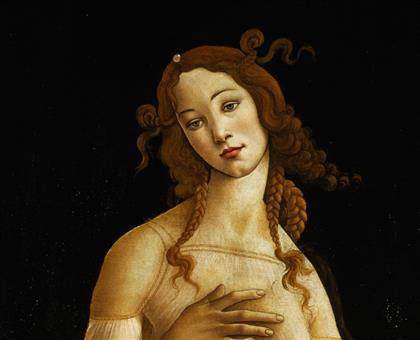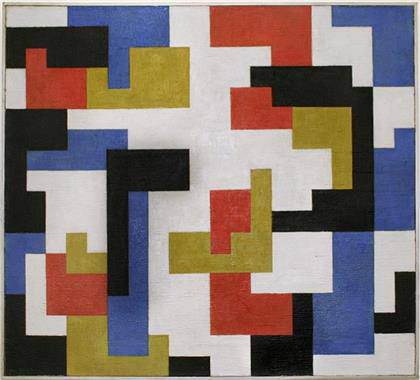
Sandro Botticelli: “Venus (detail)”
(about 1490, Galleria Sabauda, Turin)
Botticelli and the Search for the Divine ‘Botticelli and the Search for the Divine’, on view at the Museum of Fine Arts, Boston, from April 15 to July 9, 2017, explores dramatic changes in the artist’s style that reflect the shifting political climate of 15th-century Florence.]]>
Source: Museum of Fine Arts, Boston
Perhaps more than any other painter, Sandro Botticelli (about 1445–1510) exemplifies the Renaissance in Florence during the 15th century, and his signature style of strong contours, lyrical poses and flowing drapery remains instantly recognizable more than five centuries later. Paintings from museums and churches in seven Italian cities are brought together in the largest exhibition of works by the artist ever to be shown in the US, nearly all on view here for the first time.
At the height of his career, Botticelli was supported by the powerful Medici family, headed by Lorenzo the Magnificent. “Pallas and the Centaur” (1481, Uffizi, Florence) and “Venus” (about 1490, Galleria Sabauda, Turin) -Botticelli’s reworking of his famous “Birth of Venus”- are nearly life-size works from this period and display the painter’s skill in depicting elegant figures from classical mythology.
In his later years, Botticelli became a follower of the stern Dominican friar Girolamo Savonarola, who by 1495 had established a theocracy in Florence following the exile of the Medici family. Personal conduct came under severe scrutiny, and in 1497 all manner of worldly goods—including cosmetics, mirrors, fancy clothing and paintings—were burned in the notorious “Bonfire of the Vanities.” Under Savonarola’s sway, Botticelli’s graceful manner gave way to a newly austere approach, and secular subject matter disappeared. Severe religious paintings dominate the artist’s later production, and such masterpieces as the “Virgin and Child with the Young Saint John” (about 1495, Galleria Palatina, Palazzo Pitti, Florence) demonstrate the striking departure from his earlier sweet style. The exhibition also includes paintings by Botticelli’s teacher Filippo Lippi, his student Filippino Lippi and other contemporaries. Additionally, rare engravings and woodcuts help bring to life the rich cultural context of Florence in the age of Botticelli and Savonarola.
Related content
Michelangelo – The Last Judgement (from the “50 masterworks of painting” series)
Follow us on:


